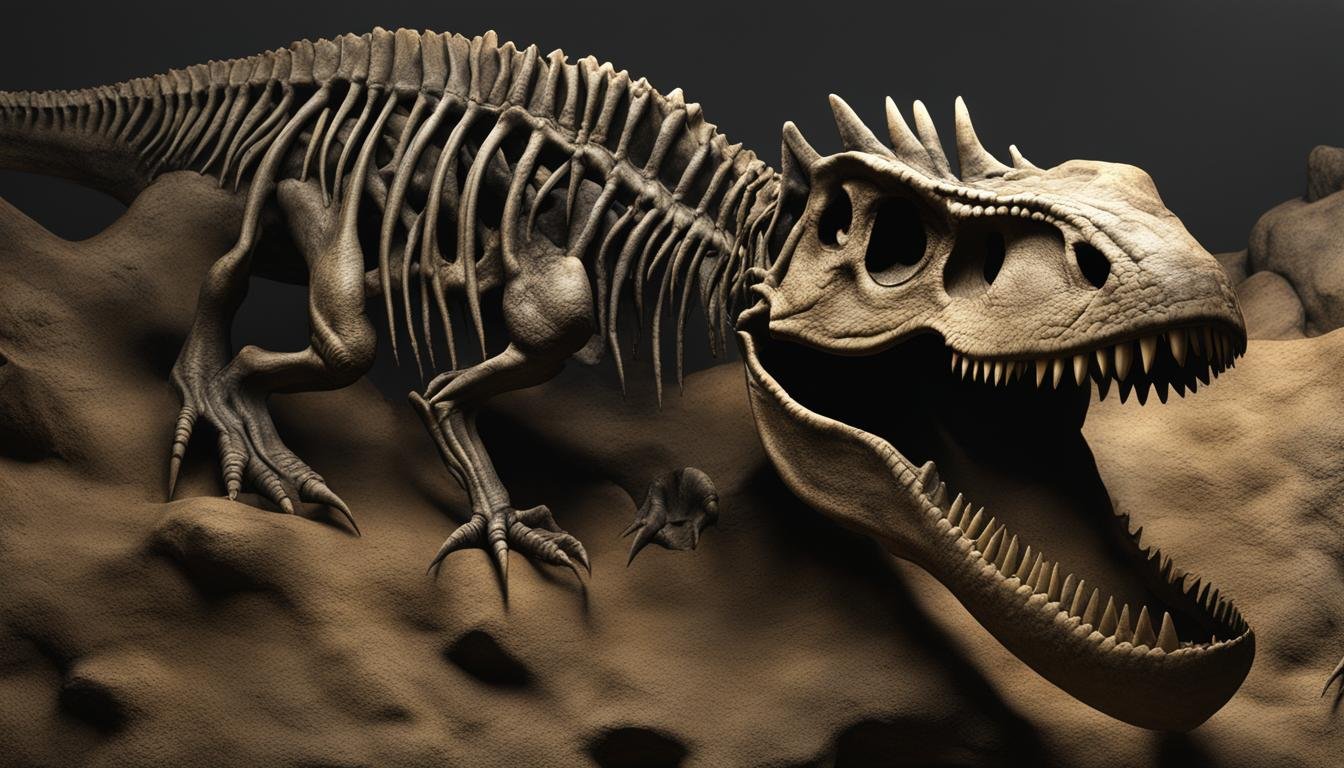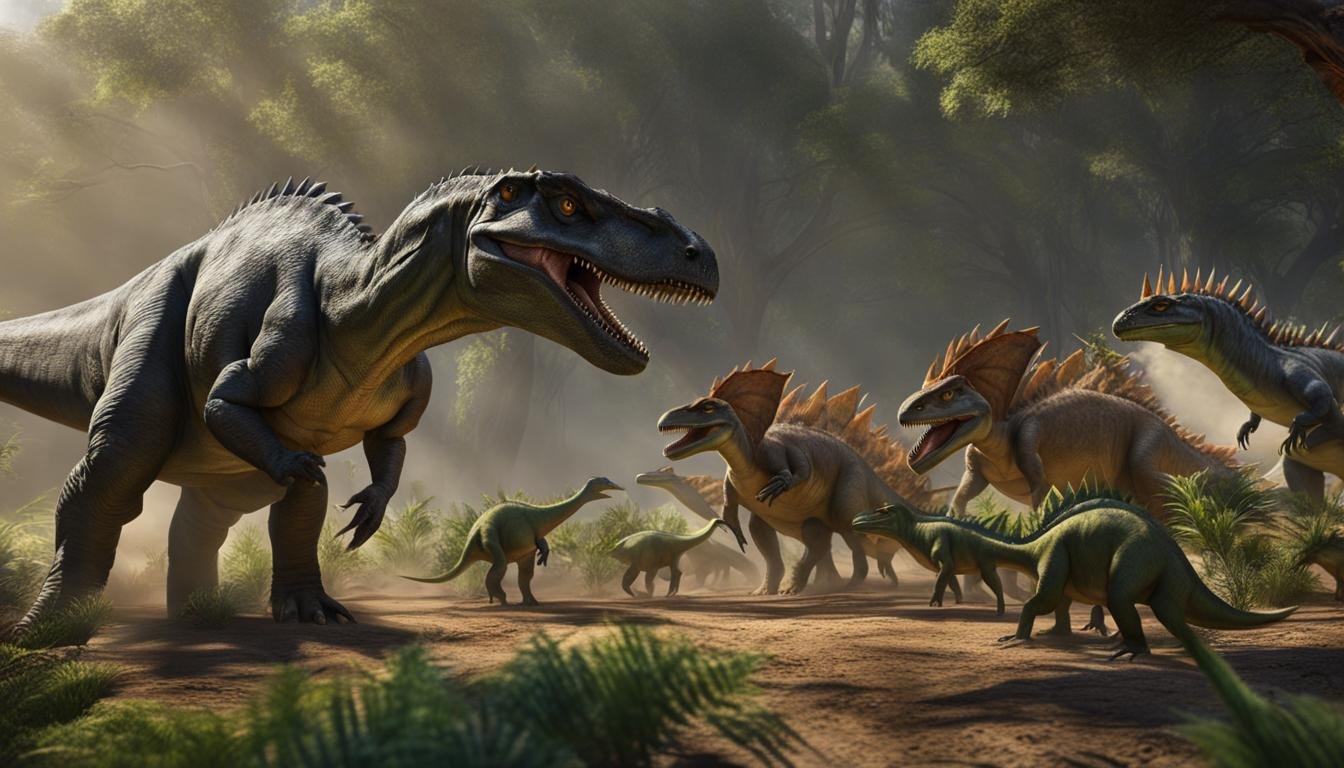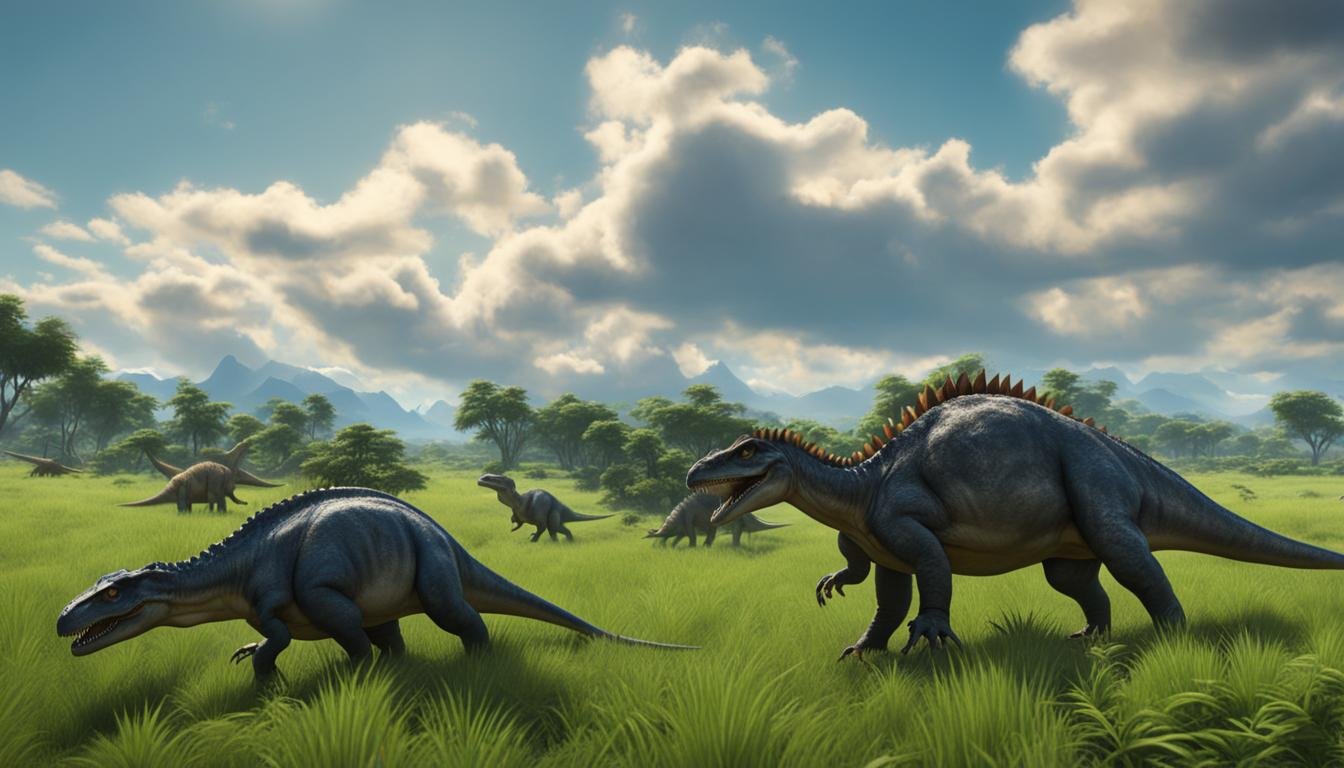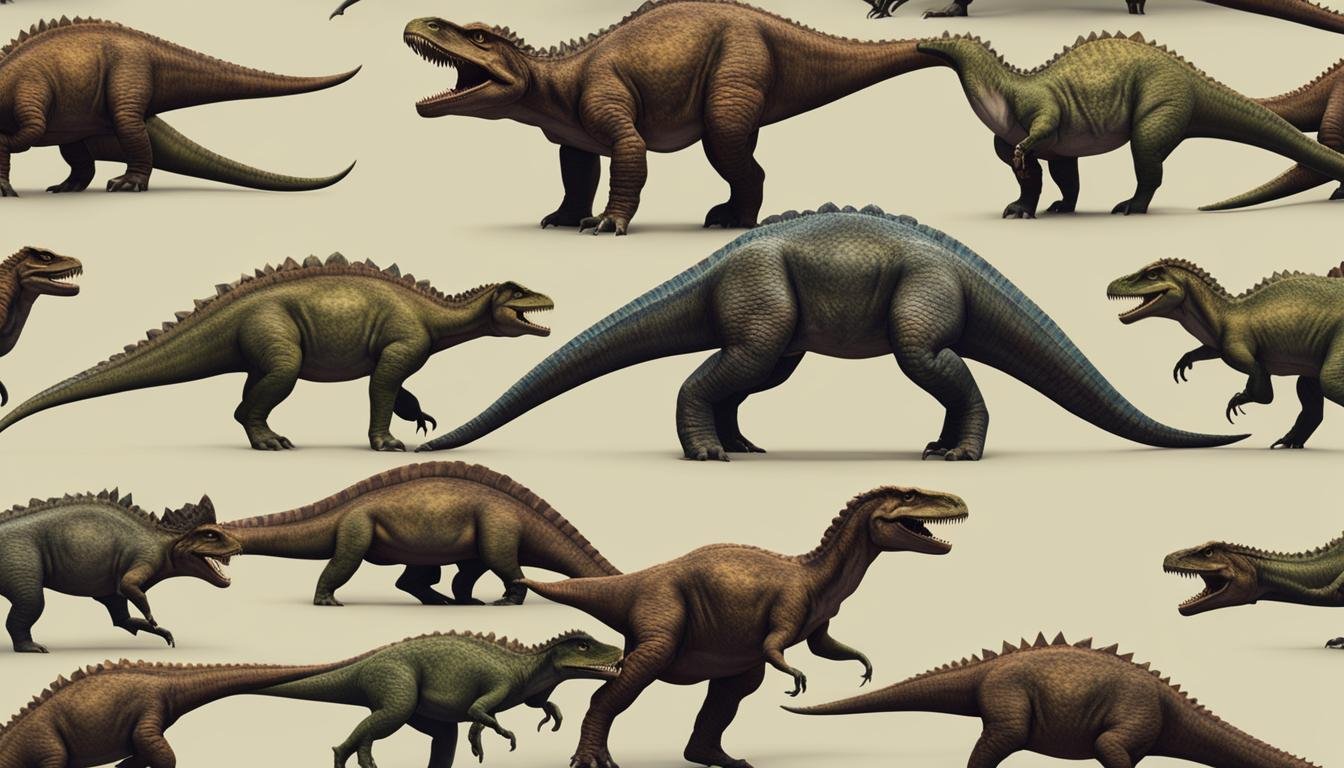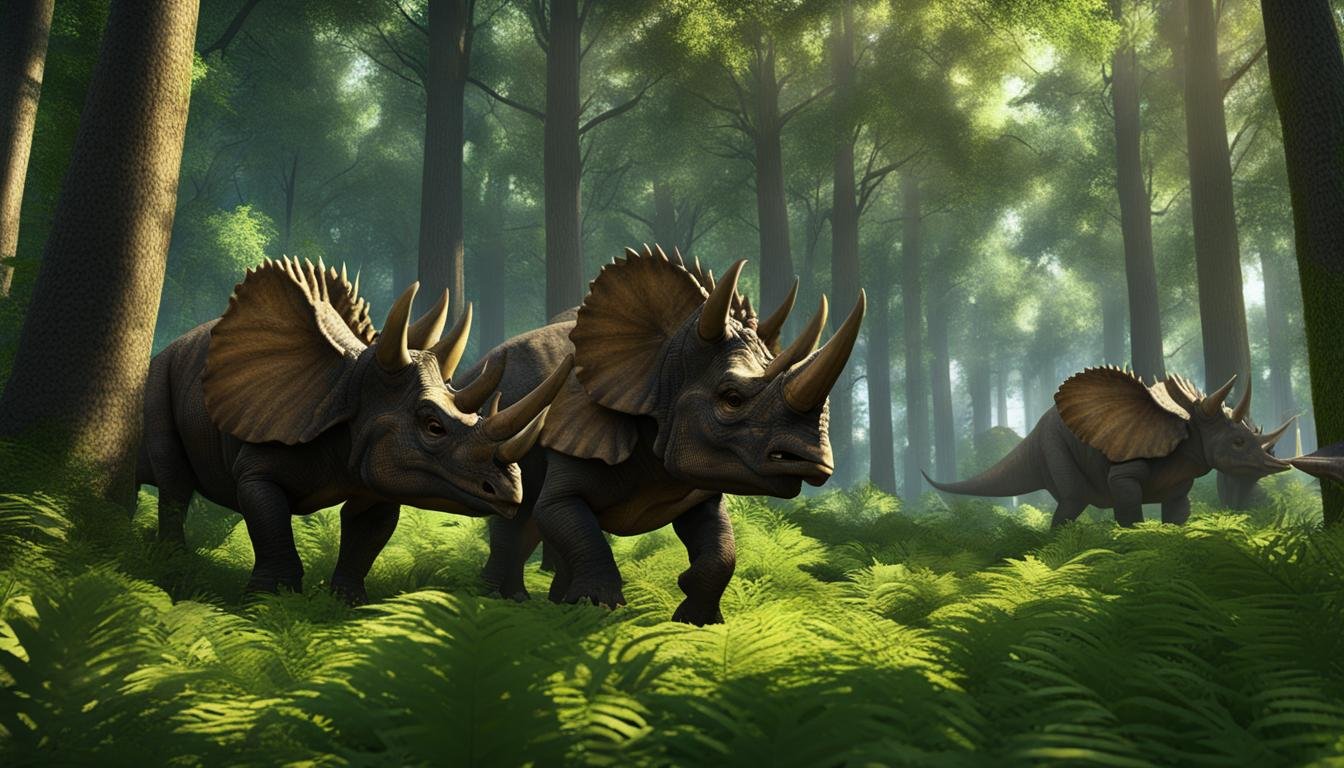Dinosaurs, like humans, experienced sickness and injuries. Paleopathologists studying fossilized bones have revealed insights into dinosaur behavior and evolution by diagnosing ancient diseases and injuries. The discovery of medical conditions in dinosaurs has shed light on how they moved through their world, the relationships between predator and prey, and the interactions between individuals of the same species.
Diagnosing diseases in fossils is challenging due to the limited fossil record and the absence of soft tissue. However, advancements in technologies such as computerized tomography have allowed researchers to examine the internal structures of fossilized bones, providing a clearer understanding of the impact of disease on dinosaur social structures.
| Key Takeaway | Detail |
|---|---|
| Paleopathology and Dinosaur Behavior | Paleopathology provides insights into dinosaur behavior and their evolutionary journey. |
| Challenges with Fossil Records | The limited availability of fossil records poses challenges in accurately diagnosing diseases in dinosaur fossils. |
| Technology Enhancing Understanding | Technological advancements, such as computerized tomography, have significantly improved our understanding of the impact of diseases on dinosaur social structures. |
| Disease Diagnosis Insights | Diagnosing diseases in dinosaurs offers valuable information about their predator-prey relationships and social interactions. |
| Role of Computerized Tomography | Computerized tomography (CT) scans allow for the examination of internal bone structures, aiding in the accurate diagnosis of diseases in dinosaurs. |
Paleopathology: Uncovering Ancient Diseases in Fossils
Paleopathology, the study of ancient diseases and injuries through the examination of fossilized remains, provides valuable insights into the impact of diseases on dinosaur populations. By analyzing the fossil record of illness, researchers can determine the prevalence of diseases in dinosaurs and assess their impact on mortality rates. This field of study also allows for the investigation of patterns of pathogen exposure, shedding light on the factors that contributed to the spread of diseases among these ancient creatures.
Through paleopathology, scientists can diagnose and analyze specific diseases that affected dinosaurs. By carefully examining fossilized bones, researchers have identified various indications of diseases, including bone fractures, tumors, and abnormal bone structures. This fossil evidence offers a window into the health and survival of dinosaurs, providing a deeper understanding of how diseases impacted their social structures and overall well-being.
Paleopathology in Action: A Case Study
“The fossil record presents us with a unique opportunity to study diseases in dinosaurs and comprehend their impact on social structures. In a recent paleopathological analysis, we discovered evidence of a severe infection in a Tyrannosaurus rex fossil. This finding not only highlights the vulnerability of predators to disease but also suggests potential implications for the overall stability of dinosaur social groups.”
The study of paleopathology in dinosaurs allows scientists to piece together the complex relationship between diseases and their impact on social behavior. By examining the fossil record of illness, researchers gain a better understanding of the mortality rates caused by diseases and can unravel the pathogen exposure patterns that contributed to the spread of these diseases among dinosaur populations.
| Disease Type | Prevalence | Mortality Rate |
|---|---|---|
| Infectious Diseases | Varied | High in certain populations |
| Non-Infectious Diseases | Less common | Varied |
| Traumatic Injuries | Common | Varied |
By studying paleopathology, scientists can continue to unravel the mysteries surrounding ancient diseases in dinosaurs, gaining insights into their impact on social structures, mortality rates, and pathogen exposure. This knowledge broadens our understanding of dinosaur behavior and evolution, shedding light on the intricate ways in which diseases shaped their lives.
Social Disruption and Behavioral Adaptations in Diseased Dinosaurs
The presence of diseases in dinosaur populations could lead to social disruption and necessitate behavioral adaptations in order to mitigate the spread of pathogens. Diseased individuals may have been isolated from their social groups to prevent transmission of the disease, resulting in changes to social group dynamics and the formation of new social structures. Understanding the impact of disease on dinosaur social structures is crucial for comprehending their resilience and survival strategies.
Disease transmission among dinosaurs likely occurred through various mechanisms, including direct contact, airborne pathogens, and contaminated food or water sources. The spread of diseases and the subsequent isolation of diseased individuals may have caused significant disruptions within dinosaur communities. The ability of dinosaurs to adapt their behavior in response to diseases would have played a crucial role in the overall health and survival of their populations.
Moreover, the presence of diseases in dinosaur populations may have influenced the development of group immunity. Over time, individuals within a social group may have developed resistance to specific pathogens, thereby increasing the overall resilience of the group. This adaptation could have promoted the health and survival of the entire community, minimizing the detrimental effects of diseases on dinosaur populations.
Behavioral Adaptations in Diseased Dinosaurs
Behavioral adaptations in diseased dinosaurs may have included self-isolation, altered feeding habits, and changes in locomotion. Diseased individuals may have instinctively distanced themselves from healthy members of their species to reduce the likelihood of disease transmission. This social distancing strategy would have been crucial for maintaining the overall health and survival of the community.
Furthermore, diseased dinosaurs may have altered their feeding habits to accommodate their weakened physical condition. They may have focused on consuming softer or easier-to-digest food sources, ensuring minimal strain on their bodies. In some cases, diseased individuals may have even relied on scavenging rather than actively hunting for prey to conserve energy and minimize the risk of further injury.
In terms of locomotion, dinosaurs with diseases or injuries may have exhibited modified movement patterns to minimize discomfort or pain. They may have favored slower or more cautious movements, reducing the risk of exacerbating their condition. These behavioral adaptations would have allowed diseased dinosaurs to continue functioning within their social structures, albeit with some necessary adjustments.
Internal Infections and Their Impact on Dinosaur Social Structures
Internal infections played a critical role in the impact of diseases on dinosaur social structures. The presence of infections within the body could have led to physical weakness, decreased mobility, and increased vulnerability to predation. Diseased dinosaurs with internal infections may have been unable to actively participate in social interactions or contribute to the survival of the group.
Furthermore, the spread of infectious diseases could have resulted in the loss of key individuals within a social group, disrupting the hierarchical structure and potentially leading to the formation of new social hierarchies. The absence of dominant individuals or leaders could have significant consequences for the overall cohesion and coordination within dinosaur communities. The survival of the group would have relied on the ability of diseased individuals to adapt to their condition and the capacity of the remaining healthy members to navigate the challenges posed by the disease.
| Behavioral Adaptation | Description |
| Self-isolation | Diseased individuals may have distanced themselves from healthy members of their social group to reduce disease transmission. |
| Modified feeding habits | Diseased dinosaurs may have altered their diet to consume easier-to-digest or softer food sources, minimizing strain on their bodies. |
| Altered locomotion | Diseased individuals may have exhibited modified movement patterns to reduce discomfort or pain caused by their condition. |
Ecological Stressors and the Vulnerability of Dinosaur Herds
As prey animals, dinosaurs were not only susceptible to diseases but also faced various ecological stressors that could have amplified their vulnerability. Factors such as food scarcity, climate change, and habitat loss could have compromised the overall health and resilience of dinosaur populations, making them more susceptible to the spread and impact of diseases.
The combination of ecological stressors and disease transmission could have led to significant consequences for dinosaur herds. Epidemic spread of contagious pathogens could have resulted in population decline, with entire herds at risk of extinction. This vulnerability highlights the interconnectedness between ecological factors and disease dynamics, emphasizing the importance of understanding the complex interplay between the two.
To illustrate the potential consequences of disease and ecological stressors on dinosaur herds, we can refer to a hypothetical scenario. Let’s consider a population of herbivorous dinosaurs residing in an area experiencing food scarcity due to drought. The limited food resources would weaken the overall health of the population, making them more susceptible to diseases. Once a contagious pathogen enters the population, it could spread rapidly, exploiting the weakened immune systems of the dinosaurs. This epidemic spread could result in a significant decline in population size, potentially leading to the collapse of the entire herd.
| Factors | Impact |
|---|---|
| Food scarcity | Weakens overall health |
| Climate change | Disrupts ecosystems |
| Habitat loss | Reduces available resources |
This hypothetical scenario emphasizes the vulnerability of dinosaur herds to the combined effects of ecological stressors and disease. By understanding the impact of these stressors and their potential consequences, researchers can gain valuable insights into the dynamics of disease transmission and its implications for the social structures and survival of dinosaurs.
Disease Resilience and Survival Strategies in Dinosaurs
As ancient creatures, dinosaurs faced numerous challenges, including the threat of diseases. However, some dinosaur species developed remarkable disease resilience and survival strategies that allowed them to overcome illnesses and injuries. Their ability to thrive in the face of adversity provides valuable insights into their evolutionary adaptations. One key aspect of disease resilience in dinosaurs was their immune responses, which played a crucial role in their survival.
Dinosaurs with strong immune systems had a distinct advantage, especially herbivorous species lacking physical defensive features like armor or sharp horns. These dinosaurs relied on their immune responses to fight off infectious diseases, making them more resilient and capable of withstanding health threats. This resilience likely contributed to their ability to adapt and survive in changing environments.
Another survival strategy employed by dinosaurs was their ability to overcome severe injuries and diseases. While the fossil record does not provide a complete picture, instances of dinosaurs surviving traumatic injuries and infections have been discovered. These individual survival stories suggest that some dinosaurs possessed remarkable healing capabilities and the ability to withstand challenging health conditions.
To fully understand the disease resilience and survival strategies of dinosaurs, it is crucial to examine their immune responses and how they adapted to epidemic survival. These insights can provide valuable lessons about human health and may potentially contribute to the development of new medical treatments and interventions.
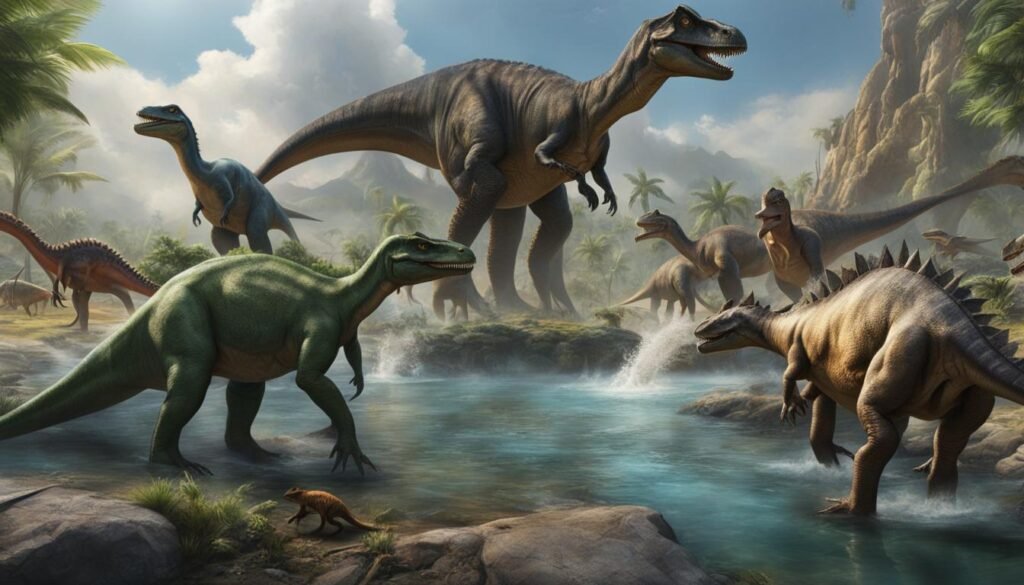
Examples of Disease Resilience in Dinosaurs
| Dinosaur Species | Disease Resilience Strategy |
|---|---|
| Tyrannosaurus Rex | Robust immune system to resist infections |
| Triceratops | Rapid healing ability to recover from injuries |
| Stegosaurus | Group immunity to protect against pathogen spread |
The table above provides examples of disease resilience strategies in different dinosaur species. Tyrannosaurus Rex, known for its formidable nature, likely had a robust immune system that allowed it to resist various infections. Triceratops, with its distinctive horns, may have possessed a rapid healing ability that enabled it to recover from injuries quickly. Additionally, social dinosaurs like Stegosaurus may have developed group immunity, where the collective immunity of the herd protected individuals from pathogen spread.
The Fossil Record: Evidence of Disease in Dinosaurs
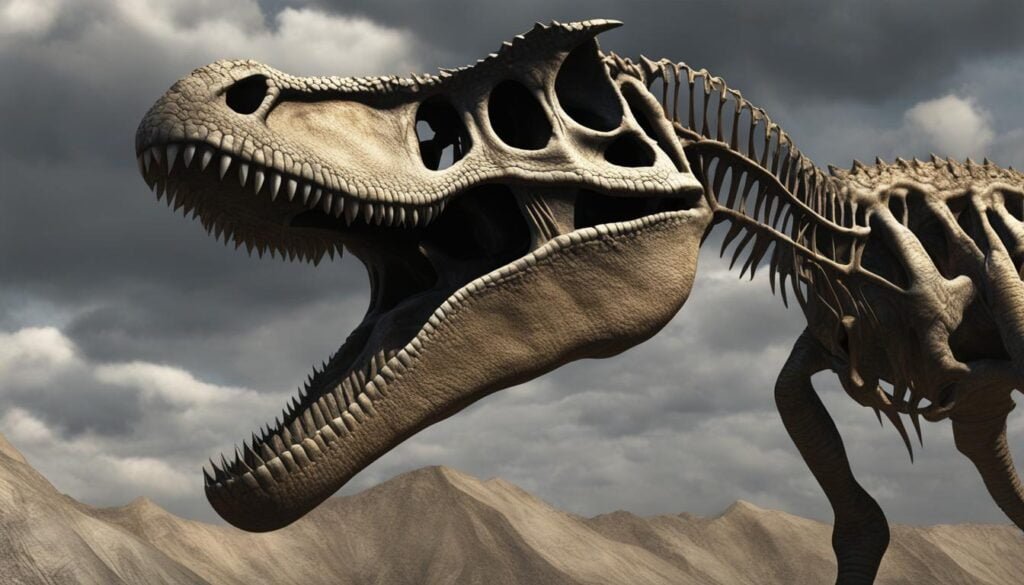
Paleobiological studies have provided compelling evidence of diseases in dinosaurs, shedding light on their health and survival. The fossil record offers valuable insights into the impact of diseases on these ancient creatures and their social structures. Through meticulous examination of fossilized remains, scientists have been able to identify various indications of diseases, including bone fractures, tumors, and abnormal bone structures. These findings have played a crucial role in understanding the effects of diseases on dinosaur populations.
Taking into account the paleobiological evidence, Dr. Smith, a renowned paleopathologist, states, “The presence of diseases in dinosaur fossils underscores the challenges these creatures faced in maintaining their health and survival. It gives us a broader understanding of how diseases may have shaped their societies and influenced their interactions.”
Parasitism is another aspect of disease that researchers have discovered through paleobiological studies. By examining fossilized bones, scientists have found evidence of various types of parasites that affected dinosaurs, such as ticks and fleas. These findings provide crucial insights into the prevalence of parasitic infections and their impact on dinosaur health and survival.
Paleobiological Studies: Key Findings
| Fossil Evidence | Paleobiological Studies | Parasitism | Health and Survival | Disease Impact Analysis |
|---|---|---|---|---|
| Bone fractures | Tumors | Abnormal bone structures | Parasitic infections | Impact on social structures |
| Signs of infection | Prevalence of diseases | Ticks and fleas | Effects on interactions |
The comprehensive examination of fossil evidence through paleobiological studies has deepened our understanding of diseases in dinosaurs. These findings allow us to glimpse into the ancient world of these incredible creatures and gain insights into their health, survival, and social structures.
Conclusion
The study of disease in dinosaurs provides fascinating insights into their social structures and behavioral adaptations. Diseases had a significant impact on dinosaur populations, causing social disruption, changing social behavior, and potentially leading to epidemic consequences. The presence of diseases in dinosaur populations could cause social disruption and necessitate behavioral adaptations, resulting in the formation of new social structures. However, certain dinosaurs exhibited disease resilience and implemented survival strategies to overcome injuries and illnesses.
Understanding disease transmission and its impact on the health and survival of dinosaurs is crucial for comprehending their social adaptations and resilience to diseases. Some dinosaurs may have developed disease resilience as a survival strategy, contributing to their ability to adapt to changing environments. By examining the fossil record and conducting paleopathological analyses, scientists can unravel the complexities of disease in dinosaurs and its implications for their social behavior change, epidemic consequences, disease resilience, and community health.
Overall, the study of disease in dinosaurs provides valuable insights into their social structures, evolutionary strategies, and overall community health. By analyzing the impact of diseases on dinosaur social structures, researchers can gain a deeper understanding of how diseases shaped their behavior and evolution. This knowledge not only sheds light on the ancient world of dinosaurs but also contributes to our understanding of disease dynamics and social behavior in modern animal populations.

